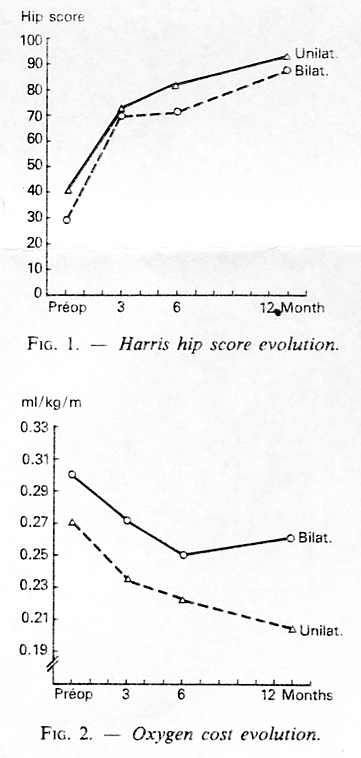|
Energy Consumption After Total Hip Replacement Brostrom examined Harris hip scores and the oxygen cost of 20 patients undergoing unilateral and bilateral total hip replacement. There was a moderate correlation between the Harris hip scores and the oxygen cost in the region of r =.47
The oxygen cost reductions seen clearly show the reduction in cost of unilateral compared with bilateral arthroplasty inferring that even an artificial hip has a cost. Unfortunately there is no mention of the disease status of the knee joint or the other hip in the unilateral cases Incidentally, Kantor examined the energy consumption of ten patients who had undergone a rescection arthroplasty of the hip following infected total hip arthroplasty and found that the energy consumption inthese cases was 265% of normal and that their walking speed was only 41% of normal. References Brostrom LA, Mattsson E. Gait efficiency after total hip replacement. Rev Chir Orthop Reparatrice Appar Mot 1988;2(271):271-2. Iida H, Yamamuro T. Kinetic analysis of the center of gravity of the human body in normal and pathological gaits. J Biomec 1987;20(10):987-95. Kantor GS, Osterkamp JA, Dorr LD, Fischer D, Perry J, Conaty JP. Resection arthroplasty following infected total hip replacement arthroplasty. J Arthroplasty 1986;1(2):83-9. |

